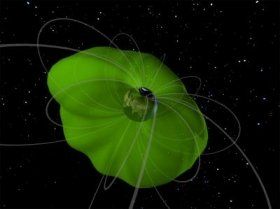On March 25, 2000, NASA launched the Imager for Magnetopause-to-Aurora Global Exploration, or IMAGE, mission. It was the first mission to use neutral atom, photon and radio imaging techniques to produce large-scale, simultaneous measurements of the charged particles that exist in near-Earth space — namely in our magnetosphere, the magnetic fields that surround our planet, and its inner bubble of cold material called the plasmasphere.
“IMAGE was a discovery machine and a seminal mission that gave us a broader perspective on Earth’s environment and its ever-changing magnetosphere,” said Jim Green, director of planetary science at NASA Headquarters in Washington, who worked as a co-investigator and deputy project scientist for IMAGE. “Much of my career as a magnetospheric physicist was with IMAGE, and the science was transformative.”
Originally designed as a two-year mission, IMAGE was approved twice to continue its operations. But when the spacecraft unexpectedly failed to make contact on a routine pass on Dec.18, 2005, its promising tenure seemed to be cut short.
Read more at NASA/Goddard Space Flight Center
Image: An oblique view of the plasmasphere, reconstructed from IMAGE data. (Credit: NASA's Goddard Space Flight Center Scientific Visualization Studio/Tom Bridgman, lead animator)


